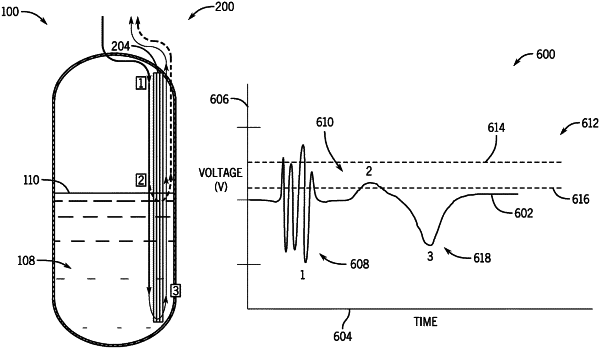| CPC G01F 23/24 (2013.01) [G01F 23/284 (2013.01)] | 20 Claims |

|
1. A fluid level detection system, comprising:
a probe, the probe including a conductive trace extending along at least a portion of the probe, the probe being positioned within an interior of a tank, the tank containing a fluid with a level, and at least a portion of the probe being in contact with the fluid;
a pulse generator, the pulse generator adapted to supply a pulse to the probe for transmission along the conductive trace;
a timer, the timer adapted to identify a first time, corresponding to a transmission time of the pulse, and a second time, corresponding to a receipt time of a reflected pulse; and
a comparator, the comparator adapted to receive at least the reflected pulse from the probe and to determine a value for the reflected pulse; and
a connecting region forming at least a portion of the probe, the connecting region including a plurality of channels to separately receive the pulse from the pulse generator, the plurality of channels including at least a measurement channel and a first calibration channel, the first calibration channel being disconnected from the measurement channel so that when the pulse is transmitted to the measurement channel the pulse is isolated from the first calibration channel, and wherein the measurement channel includes a launch zone corresponding to a trace pattern having a longer length than a connecting region length to provide a time delay between transmission of the pulse and entry of the pulse at the probe.
|